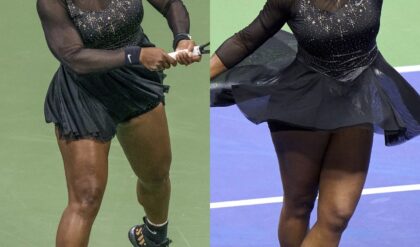After years of appearing at home in the ring, Anthony Joshua looked lost, confused and bewildered in the minutes that ensued once he stepped through the ropes to fight each of Jermaine Franklin and Robert Helenius during 2023.
However, stoppage wins against both Otto Wallin and Francis Ngannou – who each took Tyson Fury the distance, have convinced the world of boxing that ‘AJ’ is far from done in the heavyweight division. Here, we look at three reasons behind the U-turn in Joshua’s form.
1. The Ben Davison Effect
The easiest identifiable independent variable is Joshua’s decision to appoint Ben Davison as his head trainer. At the time, Davison became Joshua’s fourth trainer in five fights and could be seen as desperation as the two-time champion exhausted every option in an attempt to find his feet and prevent a run of fights that would leave a stain on his résumé and legacy.
Yet, the move proved to be a masterstroke as Joshua rediscovered his confidence and killer instinct by adopting a new style that merged the aggression of the ‘old Anthony Joshua’ and the back-footed ‘safety-first’ approach of the Joshua that we had seen since he suffered that famous knockout defeat to Andy Ruiz Jr.
Instead, the modern version of Anthony Joshua is one that picks his shots and gauges the distance well but most importantly knows when and where he should press the pedal to the floor and get the finish – perhaps representing the best version of ‘AJ’ yet.
The move from Derrick James to Ben Davison also allowed Joshua to train out of the Ben Davison Performance Centre in Essex as opposed to training in Texas, meaning ‘AJ’ remains closer to home and is likely feeling more relaxed and less pressured as a result.
2. Location, Location, Location
It is no secret that Joshua has been reluctant to exchange since his defeat to Ruiz, but that consequent must-win, cautious mentality saw Joshua box a near-perfect fight in their rematch in Saudi Arabia when they met again six months later.
One year on and ‘AJ’ returned to the United Kingdom to take on Kubrat Pulev, where the impact on Joshua’s mentality was clear – he had the Bulgarian hurt badly in the third but it took him until the ninth to get him out of there.
Excusing fights against the magnificent Oleksandr Usyk, Joshua was then disappointing twice on home soil against Franklin and Helenius before the emphatic wins over Wallin and Ngannou in Saudi Arabia.
Whilst Joshua may feel less pressured when training close to home, fighting in front of a home crowd is a completely different environment, with the air of expectancy from the knockout-hungry fans sure to cause nerves, especially after back-to-back defeats and a run of poor form.
Meanwhile, in the Middle East, the atmosphere is more akin to how ‘AJ’ would have felt in the early stages of his career and in the amateurs, where a methodical approach and points win is seemingly met with as much appreciation as a highlight-reel knockout.
This has allowed Joshua to think straight whilst inside the ring and to not be concerned by the opinions or the noise of the crowd – of which there is little in Saudi Arabia. From a cacophony of jeers to a round of applause, there is every chance that Joshua feels more comfortable when he is not being egged on by those in attendance.
3. Matchmaking
The final possibility is one for the pessimists at first glance although it may not necessarily be a criticism of Joshua’s recent opponents. Simply put, neither Jermaine Franklin or Robert Helenius appeared as though they came to London to defeat Anthony Joshua and shock the world.
Franklin came across as content to hear the final bell after realising he was outmatched during the mid-rounds and Helenius was drafted in as a late-notice replacement for Dillian Whyte, in all likelihood being persuaded by a sizeable pay-day to keep the event alive.
Whereas, ‘AJ’ appeared vulnerable during the build-up to a intriguing affair against a tricky Swedish southpaw in Wallin and many believed he was susceptible to a knockout ahead of the Ngannou clash, given the latter’s performance against Fury. Each of those men came to win and each of them left gaps in their defence for Joshua to capitalize on – to which he duly obliged.
Joshua’s apparent revival to the peak of the division could simply be put down to the fact that he was facing willing opponents that resembled a football team looking to beat Manchester City at their own game, whereas before he was lining up against a Stoke City side that came and parked the bus in the hopes of avoiding embarrassment, settling for a 2-0 defeat rather than a 6-0 dismantling.
Whether Anthony Joshua’s newfound form will continue remains to be seen but it comes at a time where the heavyweight scene is thriving and where he presence remains as a key part of that.
A fight against Daniel Dubois looms for September as ‘AJ’ bids to become boxing’s fifth three-time heavyweight champion, before possibly moving on to a undisputed title challenge against the winner of Usyk-Fury II but regardless of the result of either of those contests, Joshua is and always should be as one of the greatest Brits to ever lace up the gloves.






